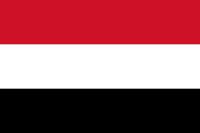
The Middle East and North Africa is a geographic region whose countries are often referred to by the acronym MENA.
The 10th Arab Games was an international multi-sport event which took place in Algiers, Algeria, between 24 September and 10 October 2004. It witnessed the participation of all Arab League members for the first time – 22 countries participated in 26 sports.

The Arab Parliament is the legislative body of the Arab League. At the 19th Arab League Summit in Amman, the Arab states agreed to create an Arab Parliament, and came up with a resolution to give Amr Moussa the Secretary General of the Arab League the power to start and create the Parliament. In 2004, in the ordinary Arab League Summit in Algiers was the official date where all Arab League Members agreed to send their representative to the temporary Parliament sessions that took place in the headquarters of the Arab League in Cairo, Egypt, with each member state sending four members, until the Parliament is reassigned permanently to its under-construction office in Damascus.
Arabic Industrial Development, Standardization and Mining Organization (AIDSMO)

This is a list of the competitive matches played by the Syrian football team since its inception.

The Association of Arab Universities, also called the Union of Arab Universities, is an organization working within the framework of the Arab League. It is based in Amman, Jordan. The objective of the organization is to support and connect universities in the Arab world, and to enhance cooperation among them.

The Arab Regional Centre for World Heritage is a Category 2 Centre under the auspices of UNESCO. founded as an autonomous and independent Bahraini public institution in 2010.

This is a list of the Saudi Arabia national football team results from 1957 to 1979.

This is a list of the Iraq national football team results from 2010 to 2019.
The Federation of Arab News Agencies (FANA), a branch of the Arab League, is a membership organization for Arabic-language, national news agencies, currently of 18 or 19 members and established in 1975 in Beirut, Lebanon.

At the 2023 Arab Games, the athletics events are currently being held at Miloud Hadefi Stadium in Bir El Djir, Oran, Algeria from 4 to 7 July. A total of 43 events are to be contested.












